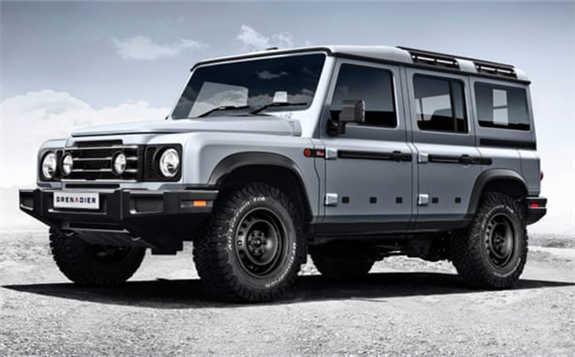Ineos and Korean carmaker Hyundai have agreed to work together on hydrogen fuel cells that will eventually power the British chemical company’s new off-road vehicles.

They will collaborate on developing a reliable supply of hydrogen in Europe, as well as using Hyundai’s fuel cells in Ineos’s vehicle, called the Grenadier.
Sir Jim Ratcliffe, the founder of Ineos and one of Britain’s richest people, has invested millions in developing the car, which will come to market in early 2022 with an internal combustion engine.
However, Ineos also plans to produce a version capable of running with zero carbon dioxide emissions to meet tightening environmental standards around the world, and it believes that battery electric power will not give it the rugged capabilities in areas with patchy electricity supply.
Hydrogen fuel cells power electric motors with water as the only emission. Many companies are betting that hydrogen will be the dominant technology powering larger vehicles, from buses to trains, because it offers higher energy density compared to lithium ion batteries.
Ineos launched its effort to muscle in on the automotive market in 2018, after Jaguar Land Rover confirmed that its famous Land Rover Defender would be redesigned after 70 years of little external change.
Ratcliffe, a prominent supporter of the campaign to leave the EU, initially planned on making the Grenadier in the UK, but later chose to build it in France, when Mercedes-Benz owner Daimler put a plant up for sale.
That deal is expected to be completed within weeks, with production of the Grenadier – named after one of Ratcliffe’s favourite London pubs – due to start in December 2021.
Mark Tennant, commercial director at Ineos Automotive, said that internal combustion engines remained the best option for the Grenadier to handle “rough, tough jobs”, but that hydrogen fuel cells were part of the longer term plan.
“You need something that will give good range and will be fairly autonomous in the sense of travelling into the hinterlands of Africa or Australia,” he said.
Promoting a hydrogen supply chain could also benefit Ineos’s existing chemicals business, which already produces 300,000 tonnes of hydrogen a year.
This article is reproduced at www.theguardian.com